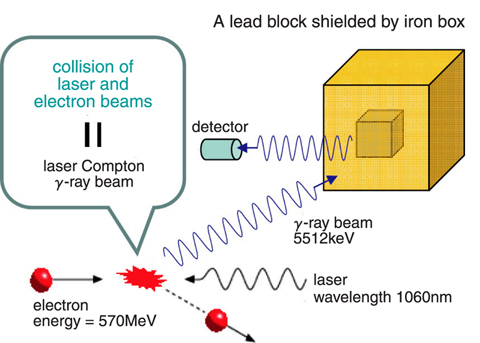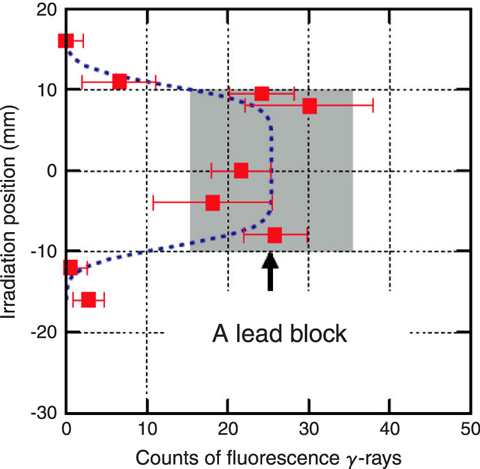
Fig.4-16 Experimental setup of isotope-specific mapping of shielded objects

Fig.4-17 Experimental result of isotope-specific mapping
Isotopic composition of materials cannot be determined with techniques of chemistry, and is particularly difficult when non-destructive and non-obtrusive detection is required as in many industrial situations. The ability to perform isotope-specific "photography" would have numerous applications. For example it would enable the detection of fissile and radioactive material of importance to development of the next generation of nuclear power systems.
We have proposed a nondestructive detection system based on nuclear resonance fluorescence (NRF) excited by laser-Compton scattering γ-ray sources (LCS) for the above purpose. This method is based on two key technologies: NRF and LCS. NRF provides a unique fingerprint of each isotope (as opposed to each atom) since the excitation energies in NRF are determined by the numbers of protons and neutrons in the nucleus of interest. Using NRF-based mapping with a tunable, monochromatic γ-ray beam, one can in principle construct a high-resolution, quantitative, isotope-specific map of the composition of any object.
We have made an experimental demonstration of NRF-based isotope mapping of deeply concealed objects. A block of 208Pb was concealed in an iron box of 1.5cm thickness for this test. With irradiation from a γ-ray source tuned at the nuclear resonance energy of 208Pb, we can detect 208Pb in the test object as shown in Fig.4-16. In the experiment, we clearly obtained a one-dimensional image of the block of 208Pb concealed in the iron box. It should be noted that the mapping is isotope specific as opposed to element specific.
The experiment was conducted at the laser Compton γ-ray beam line of TERAS, an electron storage ring at Advanced Industrial Science and Technology (AIST). A lead metal (52% 208Pb) 2x2x5cm block was used as a high Z material target concealed inside an iron box. The thickness of the front and back panels of the iron box was 1.5cm. 5512keV γ-rays irradiated the 208Pb, and NRF signals from the target were measured by germanium detectors.
After scanning the irradiation position vertically, we carried out one dimensional isotope mapping of 208Pb concealed in the iron box as shown in Fig.4-17, which was consistent with the geometry of the lead block.
NRF-based isotope mapping can be applied to the advanced safeguard technology required for a stable and secure supply of nuclear power energy. Isotope mapping is necessary and ideally suited for the non-destructive detection of clandestine fissile materials in cargo and assays of radioactive waste from the nuclear fuel cycle. We are developing a novel type of electron accelerator, an energy recovery linac, as a future high-flux γ-ray source.